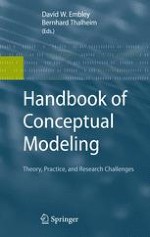2011 | OriginalPaper | Buchkapitel
9. BPMN Core Modeling Concepts: Inheritance-Based Execution Semantics
verfasst von : Egon Börger, Ove Sörensen
Erschienen in: Handbook of Conceptual Modeling
Verlag: Springer Berlin Heidelberg
Aktivieren Sie unsere intelligente Suche, um passende Fachinhalte oder Patente zu finden.
Wählen Sie Textabschnitte aus um mit Künstlicher Intelligenz passenden Patente zu finden. powered by
Markieren Sie Textabschnitte, um KI-gestützt weitere passende Inhalte zu finden. powered by
